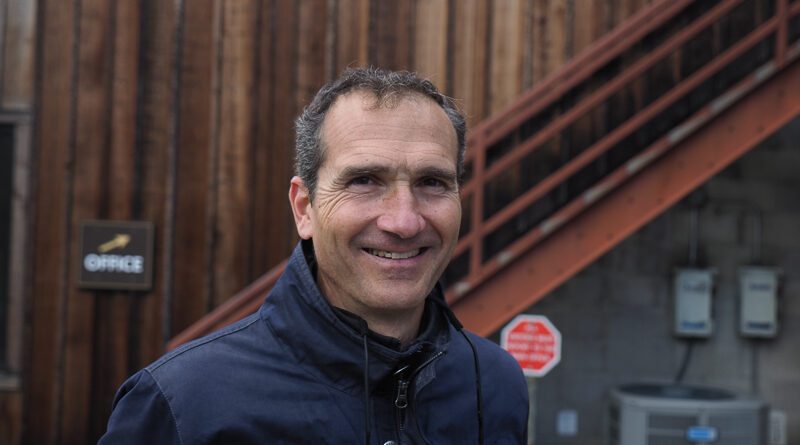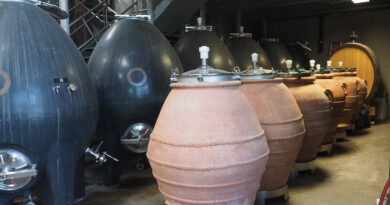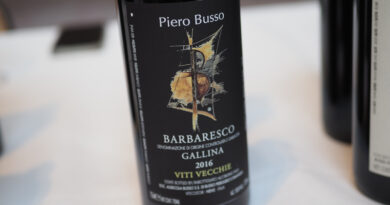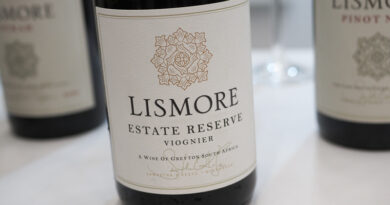Anderson Valley, California (5) Roederer Estate
In 1982, Jean-Claude Rouzeau – the CEO of Champagne Roederer – was sent to look at the wild west of California, and he ended up in the Anderson Valley. Now Roederer are making some of the USA’s top sparkling wines here, under the hand of long-term winemaker Arnaud Weyrich (pictured above), who I met with on my visit. Arnaud first came to Roederer Estate in 1993, right after he’d finished college, a decade after the start of the project.
‘In 1982 Jean-Claude Rouzeau bought the first land. There were some vineyards planted already, and he started planting in 1984-1989. The first chunk of vineyards was 340 acres. He wanted to have an estate model, which he couldn’t get in Champagne.’ Now they are making over 100 000 cases under the Roederer Estate label. ‘We are a large winery for the Anderson Valley, but we are still a pretty small potato compared with the largest houses.’
The Rouzeau family likes to acquire other family properties. Think of Deutz in the 1990s, Ramos-Pinto in the 1990s, and Domaine Ott, and Pichon-Comtesse. ‘These were all family-owned wineries changing generation, trying to find the white Knight kind of buyer. The same story happened in California in the last four years. In 2018 they bought Merry Edwards, then Diamond Creek in 2020. There was long-term knowledge of both houses, and respect between the Rouzeau family and the Brounsteins.’
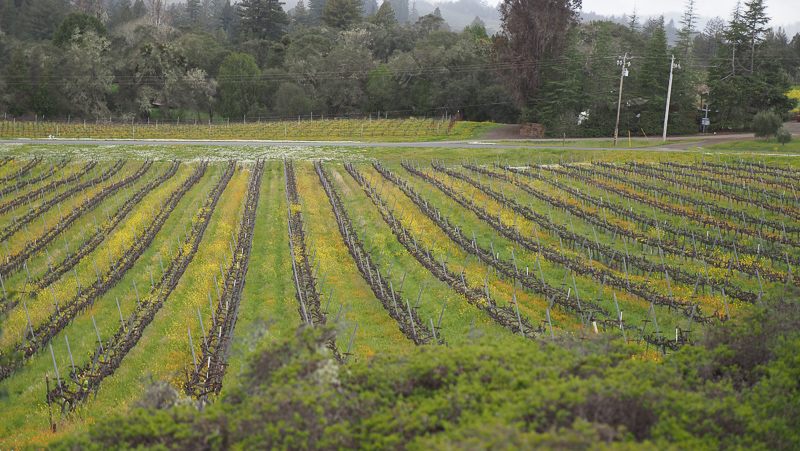
They have no downy mildew in California, and they also don’t have the grape vine moth. This makes going organic a lot easier than in Europe. ‘However, the thing that makes it difficult for us to be totally organic in California is the weather,’ says Arnaud. ‘Winter is not cold and dry: it is fairly wet and mild, meaning that grass grows like crazy. If you look at what’s out there, there is plenty of grass, and it’s wet. This is my problem: if the vineyards are all organic, how do I compete against the grass. I am 20% organic. We till every other row, and mow the other rows, and have mechanical tilling. We also do flaming early in the season, if we can get tractors in.’
And 2023? ‘This is a year where being organic 100%, you are going to be in trouble. I am 20% organic because I’ve always been short of people, and we have been investigating the correct equipment to do the part we need to do to keep the weeds under control. We have not found the magic tool yet.’
In terms of the grape quality, is it better with the organic management? Is the decision to farm organically and ethical/environmental one, or is it a wine quality one as well? ‘It starts as an ethical way to farm. We are family owned, not looking at just making profits in the short term, but working as an estate. We have a lot of employees who live on the property, to: we house 80% of our workforce. I live on the property, too, surrounded by vineyards. So if you go organic you are protecting your workers as well as the land you are farming.’
‘The Anderson Valley isn’t intensely farmed. There is still mixed land use. If you want to keep part of that diversity it is good to be conscious about what you put out there.’
‘We are kind of recreating the village model of Europe. The first European settlers in the valley were in 1850. Before the natives were mostly travelling inland from the coast and not really staying full time in the valley. The settlers came in and started to do logging, and opened some of the landscape up for grazing and cattle. Vineyards are one of the last options.’ Roederer have seven farms altogether, spreading out into the valley.
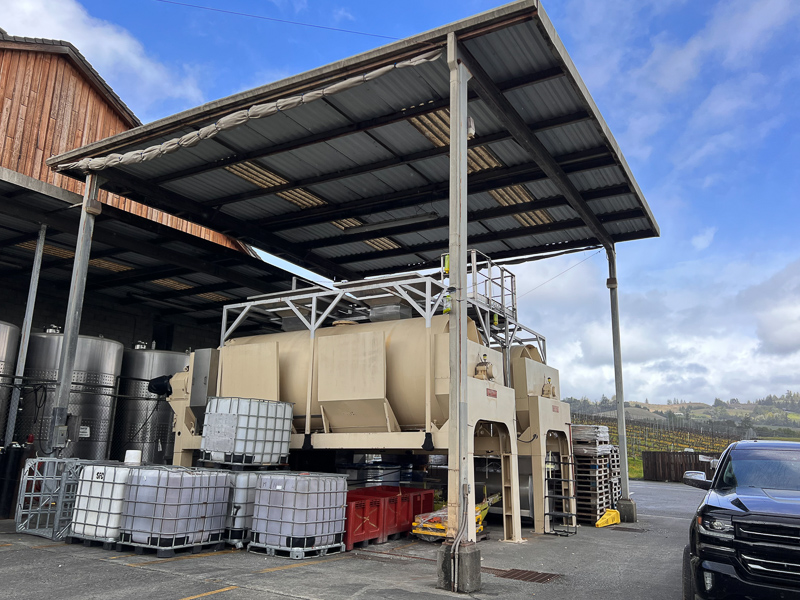
Yields in the Anderson Valley are not as high as in Champagne. ‘You’d think with more sunshine it would be easy to get the same yield,’ says Arnaud. Why is this? ‘There are two reasons. The pressure of frost here is more important here than in Champagne. There is also how much moisture there is in the ground during early spring. A big part of the yield is not only the clusters you have, but the size of the berries on the cluster. Plump berries make for higher yield. In Champagne the season isn’t that dry: there’s always a storm or a little bit of moisture.
The soils here are more sandy clay or sandy loam with no calcium content. ‘My pH of the soil is quite low. I am on the opposite spectrum of Champagne. Native pH is 5.5-6. This means that the rootstocks are not the same as in Champagne. Soil moisture and frost can explain why we get less yield. And the fact that we have a longer dry season where we can lose some yield by dehydration. On the north coast of California we still get storms late in spring. Bloom is mid-to-late May and we can still get storms from the Pacific Ocean. I remember vintages where I have lost 20-30% of my crop by a heavy downpour of a couple of inches of rain in the middle of bloom.’
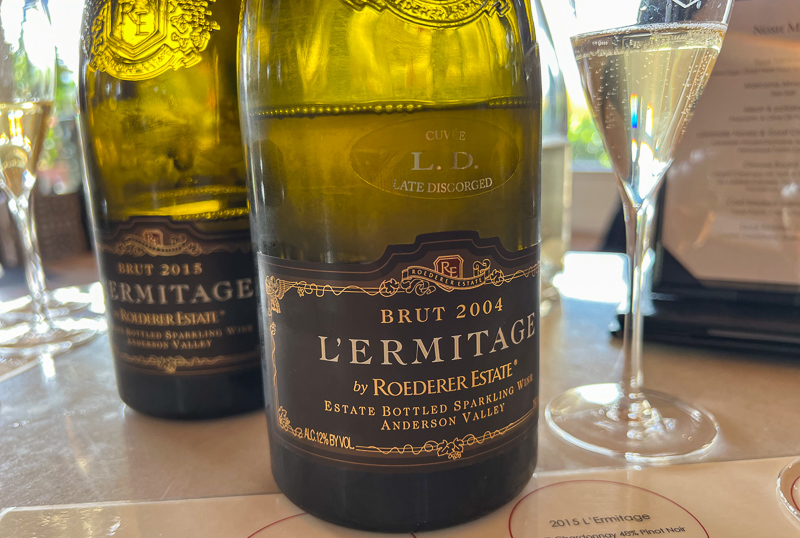
What is the challenge for making good base wines here? Is it getting flavour development in the grapes when they are picked with the right acidity and sugar levels? ‘Champagne has a challenge, which is to pick late enough to get higher ripeness, and waiting for the acidity to drop, before you get rot or rain. They wait and wait. California has the opposite issue: there is sunshine and a dry season. You have to pick early enough and not too late so you don’t get too far on the other end of the spectrum, which is dropping too much acidity or gaining too much alcohol. It’s a runaway train at some point: once ripeness starts going, it just keeps going. It is early enough in the season. When we start picking it is still mid-to-late August. Usually it is late August, but the trend is now mid August. There are long days and there’s plenty of canopy to intercept all that sunshine and turn it into sugar. The challenge is to wait until the acidity drops, but not to wait too long so that the alcohol rises.’
‘This is where we are back into the sense of place. The large diurnal variation in the Anderson Valley. Especially when it gets below 10 C at night the vines shut down and don’t burn the acid at night. In any place where you have warm days and warm nights, all that malic acid gets burned by the vines and the acid drops fast. In the Anderson Valley you start with a high pool of acid and you burn it much slower. By the time you get to 11.5% alcohol you have way more acid than in Champagne. I can easily pick at a tartaric acid equivalent of 10 or 11 g/litre for something with 11.5% alcohol. You can be at 11 g/l tartaric equivalent in Champagne but then you have 9.5-10% alcohol.
‘Because it is California and the weather is still warmer, you have a slight disconnect between the phenolics and technical maturity. This is why you have to wait a bit later to pick. 10.5% is great in Champagne but in California in the Anderson Valley it is way too early: you still have grassy high malic levels that makes the wine taste harsh. Because this is a sparkling wine from California it will always tend to feel a little richer, because you have to wait for that half to three-quarters of a point of extra alcohol to get that phenolic and technical maturity in tune.’
They pick into macrobins here. ‘There is still one French company that picks in the small cagettes in California, Mumm in Napa. In Champagne there is a regulation that you have to use Cagettes with an open bottom so if it rains all that juice or water goes into the ground. They were designed for a wet climate. You are often picking in moisture or rain. Also, the vineyard is denser and the rows are narrower, and the only way to get in there is a cagette.’
‘About 25% of what we pick at night. Some of the juice I get from this night picking can be at 45-55 F (8-10 C), which is great for pressing but is a little too cool for juice. Every year we have multiple lots that are a bit on the cool side. It is great when we pick Pinot Noir because we have no extraction and no colour, and it keeps the berries tight.’
‘Machine picking is not forbidden for sparkling. Here it is the wild west so anything is possible. We pick by hand, and let’s face it we have had so many crazy things happening the last years between Covid, between wildfires and everything, I had to get some lots picked by machine. It was the least of the evils. This is not standard at all.’
What was it like? ‘If I had not picked it, it would have been terrible. It is useable, but it is not in the top ranking. I’m a firm believer that picking by machine for sparkling is not what you want to do. This is why Champagne doesn’t allow it. A picking machine is plan B, it is insurance. Why do you buy insurance for your car? Because you want to crash your car? If you crash your car you have something that helps you.’
So, to winemaking. What about pressing? ‘I am cutting exactly the fractions that I am in Champagne,’ says Arnaud. ‘In fact, because the grapes were cheaper than in Champagne, for many years we used cuvée and very little taille. In Champagne, with the price of grapes, you have to use the taille. You take them, even if you sell them. I take very little taille. I sell the juice to someone else.’
And malolactic? ‘I have a non-malolactic style. This means that I do some every year, ranging from a few percent maybe up to 20%. This really depends on the vintage. Some years I need to do some because it is a brighter acid, it is a cooler year, there is more fog. And some years are dry and warm and that malic acid just disappears faster, and then I don’t want to do too much malolactic because then I would get a flabbier overall feel. We don’t do any wild yeast fermentations: all the Champagne yeasts have been selected over the years. I use a selection of them. I do a bit of fermentation in oak.’
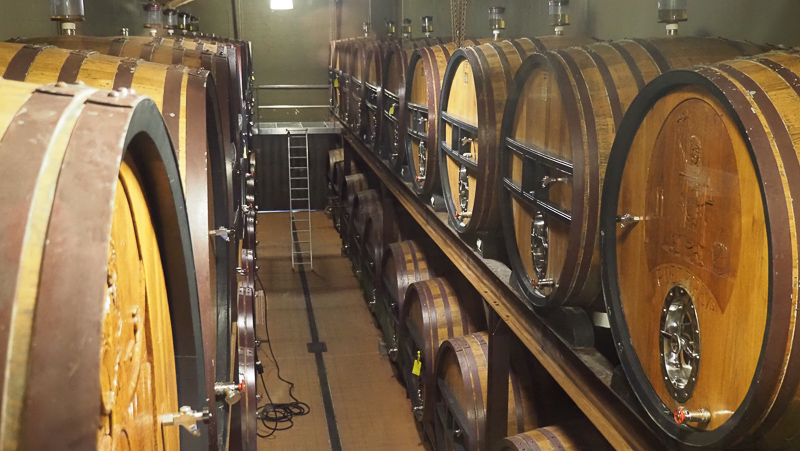
There are large oak casks which are used for keeping the reserve wines. Roederer do quite a bit of non-vintage wine. ‘The proper way to do it is call it multi-vintage, because every time the wine is set aside in a cask like this it is 100% of a given vintage. My oldest wines in cask is 2015. On average they age four years, but we have some lots that are older. My youngest in the cask room is 2022.’ Would he use a whole cask at a time? ‘Yes, exactly. This is a selection of wine from tanks that I like that go into casks for further ageing.’ There are 64 casks, ranging in size but around 4000 litres, and they are tasted twice a year.
‘The Chardonnay from Anderson Valley always brings citrus/green apple character,’ says Arnaud. ‘The Pinot can be austere with some cranberry character.’
We tasted two 2022 Vins Clairs from the tank. It was a difficult harvest with a big heatwave, but the results are really good, based on these two wines.
Pinot Noir, no malo. Fresh and vivid, lots of acid, cherry and lemon, stony and mineral. Just above pH 3, 11.5% alcohol. Not too much fruit.
Chardonnay, no malo. Lovely lemon and herb with good acidity. Juicy and bright with nice purity. Very bright and linear.
Anywhere else apart from North America, Roederer Estate is known as Quartet by Roederer.
THE WINES
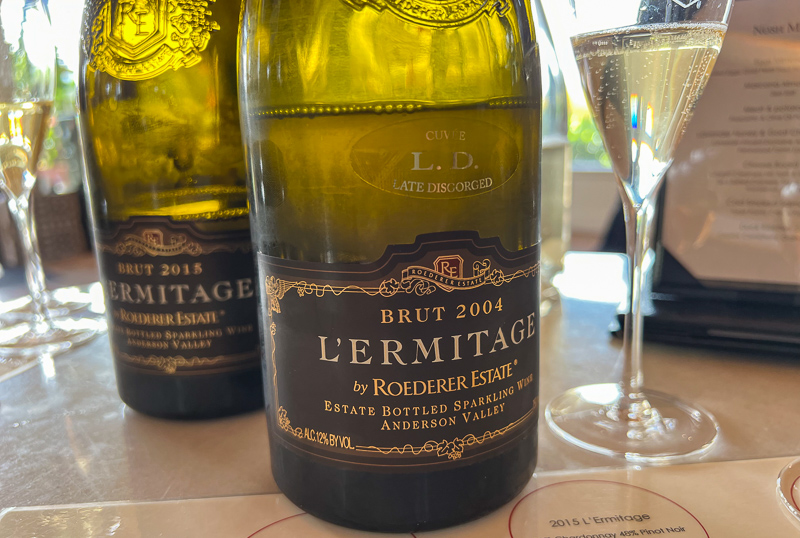
Roederer Estate Brut Multi Vintage NV Anderson Valley
60% Chardonnay, 40% Pinot Noir. Disgorged December 2021, base 2018 plus five to seven different vintages (about 10% of reserves, 2% from tanks and 8% from casks), dosage usually 11 g/l but this is going down. Lovely precision here with nice citrus and pear fruit with a touch of apple. Has nice acidity and lovely focus to the fruit. It’s pure and harmonious, and the dosage sounds high but it works really well. Very fine. 92/100
Roederer Estate Library Reserve Brut NV Anderson Valley
Aged three years on yeast and four years on the cork. It’s a base of 2015. Beautiful crystalline citrus fruit with some creaminess to the texture (there’s a natural loss of pressure) and some toast and honey character. This is zippy and bright with good acidity and some subtle notes of coffee that work really well. The underlying freshness is still there. 92/100
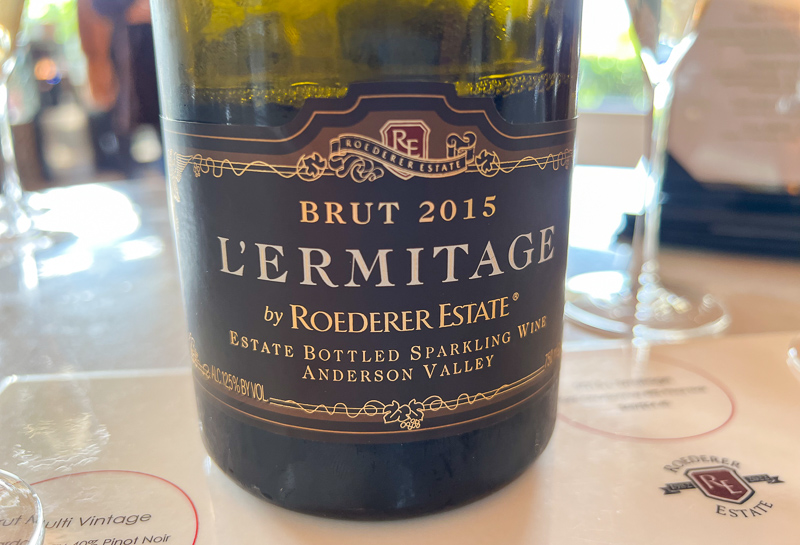
Roederer Estate L’Ermitage 2015 Anderson Valley
Disgorged Nov 2021. 52% Chardonnay, 48% Pinot Noir. 4% reserve wine. 9.5 g/l dosage. This has concentration and freshness with some lemon and lime, a touch of saltiness. There’s a nice toasty undercurrent with lovely bready, nutty hints, with good acidity holding everything together. Lovely precision to this wine with the high acidity anchoring the flavour in place. 93/100

Roederer Estate L’Ermitage Cuvée Late Disgorged 2004 Anderson Valley
Disgorged January 2020 with a dosage of 10.5 g/l. This is so expressive with good acidity and a saline twist to the citrus, pear and white peach fruit, with nice pastry, nuts and honey characters adding complexity. There’s also some wax and marzipan here with fine salty notes on the finish. 94/100
Roederer Estate Brut Rosé NV Anderson Valley
2018 base with 4.5% red Pinot Noir. Very pale in colour. Delicate and fine with lovely cherry and citrus fruit, and a touch of sweetness on the finish. Nice purity here with lemony acidity on the finish. Nice purity here. 90/100
Roederer Estate L’Ermitage Rosé 2013 Anderson Valley
Disgorged April 2021, dosage 8 g/l. This is really good. Pale pink, but with lovely palate weight showing cherry, spice, pear and citrus with nice complexity and just a hint of structure. This has lovely focus and depth to it, finishing with some grip. 93/100
ANDERSON VALLEY
Find these wines with wine-searcher.com

